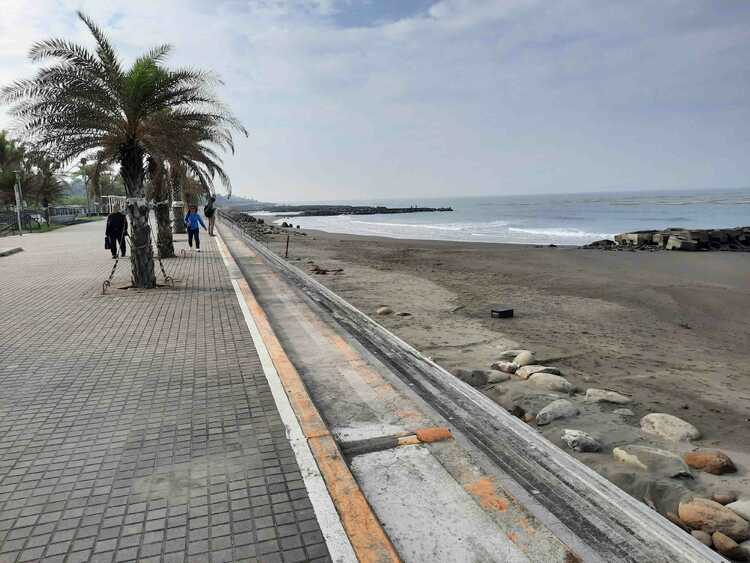It turned out that nowadays you can fly directly from Amsterdam to Taipei – capital of Taiwan. A flight of twelve and a half hours. Upon arrival someone would be waiting for me to drive me to Tainan on the southwest side. A journey of about four hours. At the airport there is indeed someone with a sign with my name and he takes me to a taxi.
The taxi driver doesn't speak English and I don't speak Chinese. So the ride is quiet. We drive on a beautiful highway with three lanes. I see the landscape changing from very urbanized to agricultural land with mainly rice fields and still a lot of buildings. Large parts of the road are raised, so that everything is clearly visible. After more than two hours of driving, the driver stops at an area with roadside restaurants and shops. He shows me on his mobile phone in English that I am expected to be back at the car after fifteen minutes. After fifteen minutes we start driving again and he shows me, again on his mobile phone, that the trip will take another hour. Quite an experience. When we arrive at the hotel, we say goodbye in a friendly manner.
The first two days there are presentations on the development of lowland areas in Indonesia, Japan, Malaysia, the Netherlands, Taiwan and worldwide. A lot of data, new developments and practical experiences are presented. Much attention is paid to subsidence, which, as I described earlier on Flevolands Geheugen in Subsidence in polders, is generally much faster than sea level rise. Coastal erosion is also discussed extensively, as there are quite a few problems with this in most countries. During the afternoon of the second day, the participants were divided into groups. Each group is expected to analyse a specific topic and come up with proposals that will be presented and discussed on the fifth day. I am curious to see what they will come up with.
The third day is dedicated to excursions. We visit a coastal zone where there is considerable erosion and where research is being done into various methods to counteract erosion. Then we visit the Taiwan Hydraulics Laboratory, where among other things, there is a huge flume to be able to do research into wave movements caused by typhoons and tsunamis, because Taiwan has to deal with both quite a bit.
On the morning of the fourth day, there were presentations on developments in the coastal zone based on natural processes and on the possible applications of AI in water management in Taiwan. Taiwan, as a country of computer chips, has also proven to be very advanced in the field of water management. We then leaved for Kaohsiung, where we visited the Water Authority, so to speak. After an extensive group photo session, because they like that in Taiwan, we got an explanation of what the Water Authority does in the area. It is demonstrated how you can generate images of what is happening at the location by looking at it and walking over a projected map. High-tech in the world of information.
Next, we visit an inflatable rubber dam that is located in the Houjin River about three kilometres from its mouth in the sea. This dam has two functions. On the one hand, it prevents the salty seawater from penetration under normal circumstances, and on the other hand, river water can be diverted for irrigation to a canal with the mouth just upstream of the dam.
The last day is mainly dedicated to the presentations of the groups, which they have indeed prepared very well and which lead to interesting discussions. At the end of the course there is a very interesting lecture by a world-famous Taiwanese professor who, among other things, established the flood warning system for Taiwan, including the associated evacuations when a major typhoon passes by. This is now probably the best system in the world and that is certainly no small performance.
To conclude the interesting and excellently organized week, there is a tour to some historical places in Tainan. We visit Fort Zeelandia that was built between 1624 and 1662 by the Dutch East India Company (VOC) and Fort Provintia from the same period. When I walk past a video presentation in Fort Provintia, I suddenly hear the Dutch National Hymn Wilhelmus to my surprise. It turns out to be part of the presentation.




